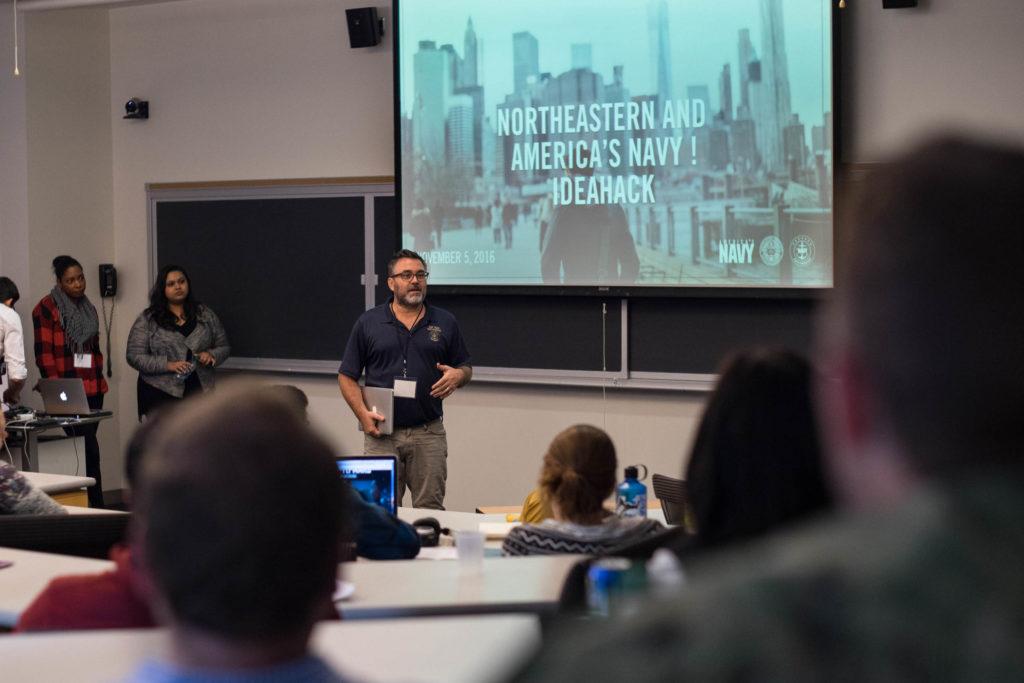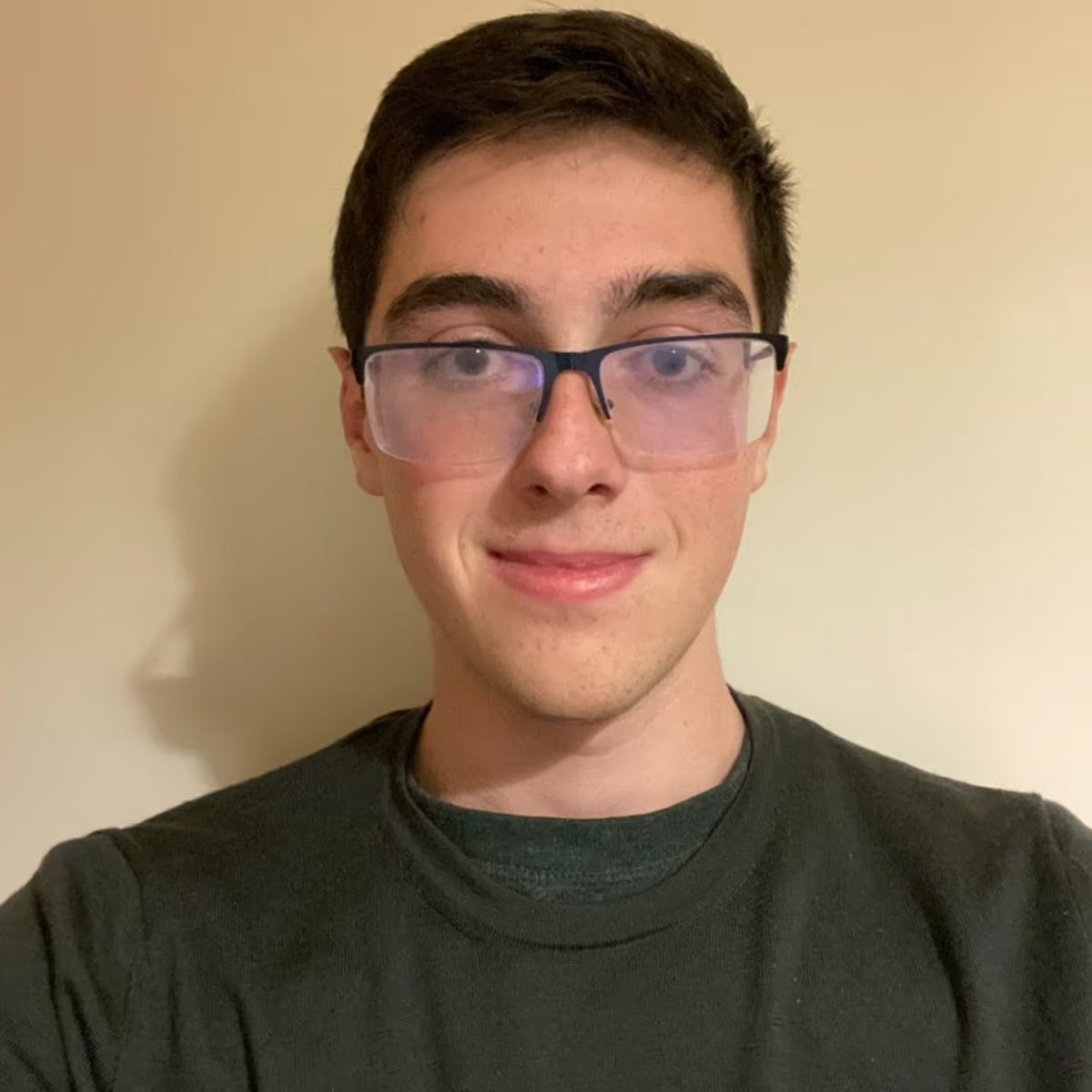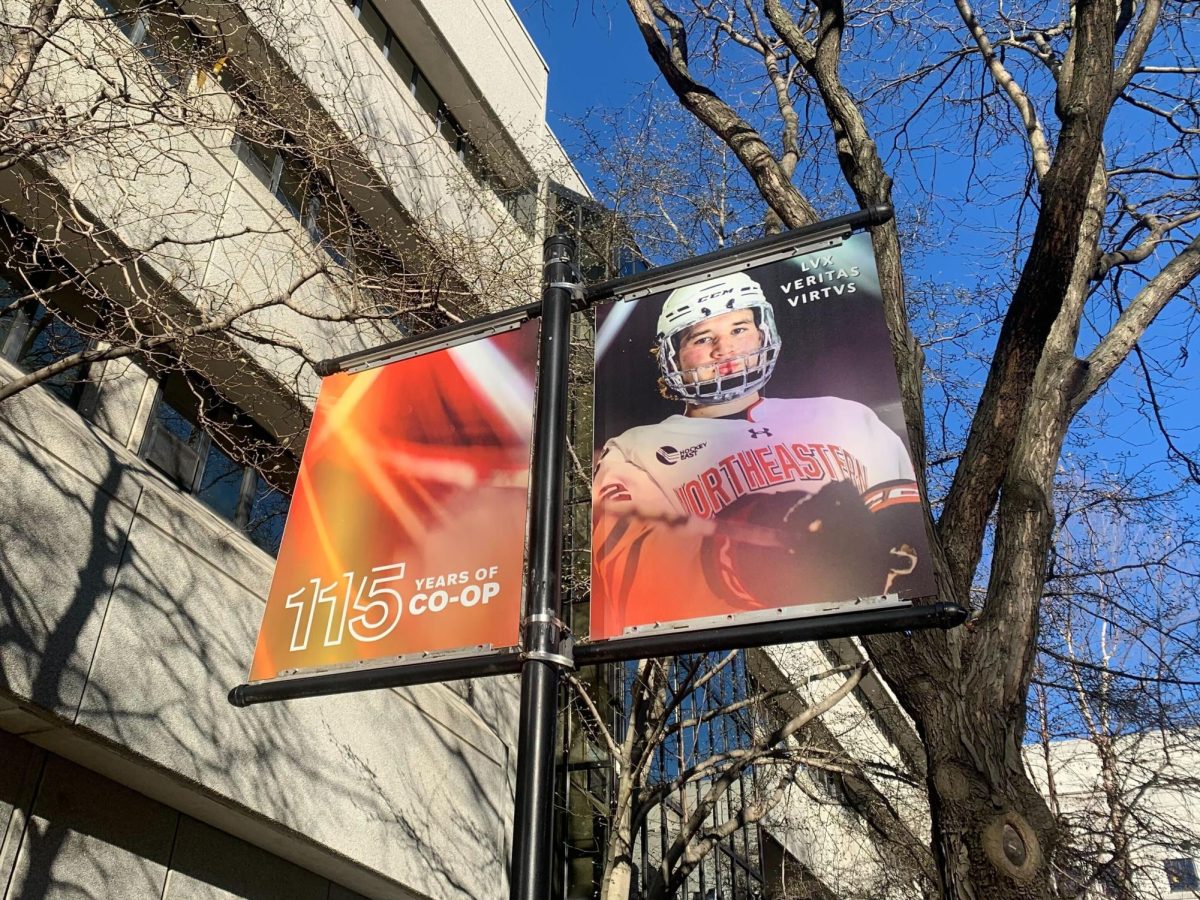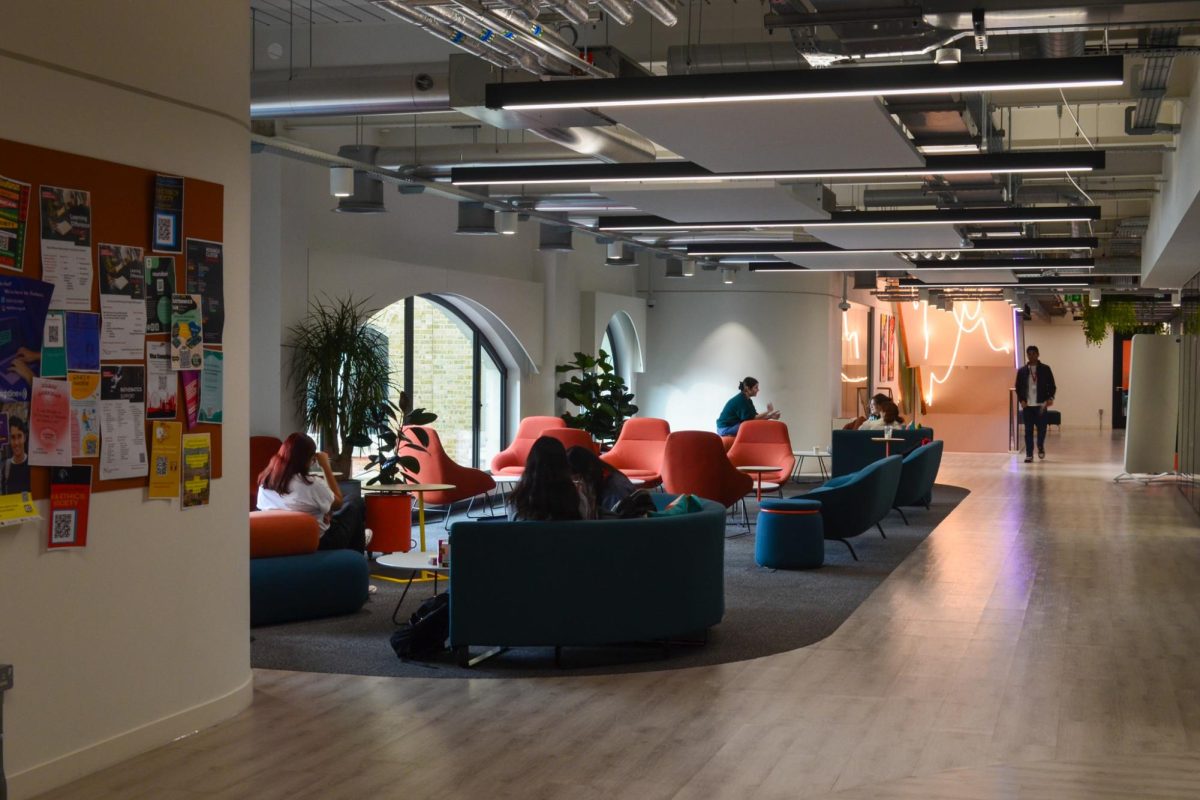By Charlie Wolfson, news correspondent
Northeastern hosted a hackathon called “Idea Hack: America’s Navy” where students invented digital platforms, social media campaigns and live demonstrations to help tell stories of the U.S. Navy.
The hackathon was a cooperative effort between the U.S. Navy, the New York-based marketing firm Young & Rubicam and Northeastern’s College of Arts Media and Design (CAMD). Approximately 50 undergraduate and graduate Northeastern students competed in seven teams in West Village G from 10 a.m. Saturday until 2 p.m. Sunday in West Village G.
A hackathon is a competition in which groups of students have a set period of time—typically 24—to create an innovative solution to a given problem. Projects commonly produced at hackathons include computer programs, short films and robots.
“I think a hackathon to me is a way of taking a very condensed period of time and allowing people to free-think in groups where we wouldn’t normally be able to do that, and take away a lot of restrictions,” said William Manfredi, Young & Rubicam’s executive vice president of global talent management. “The problem is, I look at things from a very filtered view. When you’re dealing with people who are 19 to 22 years old, they don’t have a lot of those filters and they can enlighten us.”
Participants were challenged to create a way for the Navy to recruit young people and to help the Navy express what the different career paths in the armed services look like.
“One of the things the Navy is really looking for from us is, what is the image they’re trying to create?” Manfredi said. “The purpose of this program is that their target audience is 17 to 24 [year olds]. We wanted to do a hackathon because we thought, ‘Why don’t we ask the students?’”
The teams presented their creations to a panel of judges: Young & Rubicam Global Chief Executive Officer David Sable and Senior Copywriter Megan Lee, U.S. Navy Commander Kevin Robert Schilling and School of Journalism Director Jonathan Kaufman.
The winning project was a set of virtual reality videos showcasing different jobs in the Navy, complete with a virtual reality headset for people to try on to explore their options. The team members were awarded $1,000 total and a three-month paid fellowship at Young & Rubicam.
The second place team created a platform that would connect recruits with current members of the Navy according to their demographics and interests. The purpose was to give recruits a specific source to receive information and guidance from. For this, the team won $750 and five bluetooth speakers.
The third-place project was a web interface that made it possible to apply for Navy positions with just one click by linking a central application to an applicant’s LinkedIn account. The team won $500.
Young & Rubicam has been working with Northeastern for more than four years and partnered with the Navy about six months ago, Manfredi said. The marketing firm is responsible for helping the Navy recruit 45,000 people each year, he said.
“We’re looking for a new spin on how we can make people understand the potential of being in the Navy,” said Latasha Sukhu, the global chief learning and engagement officer at Young & Rubicam.
While hackathons typically attract computer science and computer engineering majors, recruiting journalism students was a priority for this event, adjunct journalism professor Aleszu Bajak said.
“CAMD was approached to help organize it to ensure that we got journalism students and storytellers,” Bajak said. “This is the first hackathon of its kind at Northeastern.”
Felippe Rodrigues, a graduate student studying media innovation, competed at the hackathon and helped create video game that evaluates multiple Navy positions with the help of iconic characters from Star Wars, Star Trek, Marvel Comics and more.
“I like [hackathons] because it is a cool way to get out of my comfort zone and work together with people of different backgrounds, skills and mindsets,” he said. “You can for sure draw from that experience and put it into your professional life. One clear example: being able to work in teams, which is one of the most sought skills right now.”
Correction: A previous version of this article misspelled Latasha Sukhu’s name and misstated her position.









